A Hodgepodge: the Girard symbol of love, Mansur Gavriel's ode to 1960s air travel, and being married!
*This email may be truncated in your inbox. To make sure you are reading the entire post, please move yourself along to a web browser! It becomes much more colorful and fun toward the end, and you won’t want to miss it!
Bonjour, hi, I missed you!
I have been absent from the Substack universe because I was experiencing our most wondrous wedding week in the Basque Country! I now officially have a French/ Basque husband! I’m someone’s wife! My mind is truly feeling like a whirlwind of serotonin and charmingly chaotic goodness, so I thought it would be the perfect time and spirit for a hodgepodge writing.
I’ll write about the week of amour (and its many vintage dresses) soon.
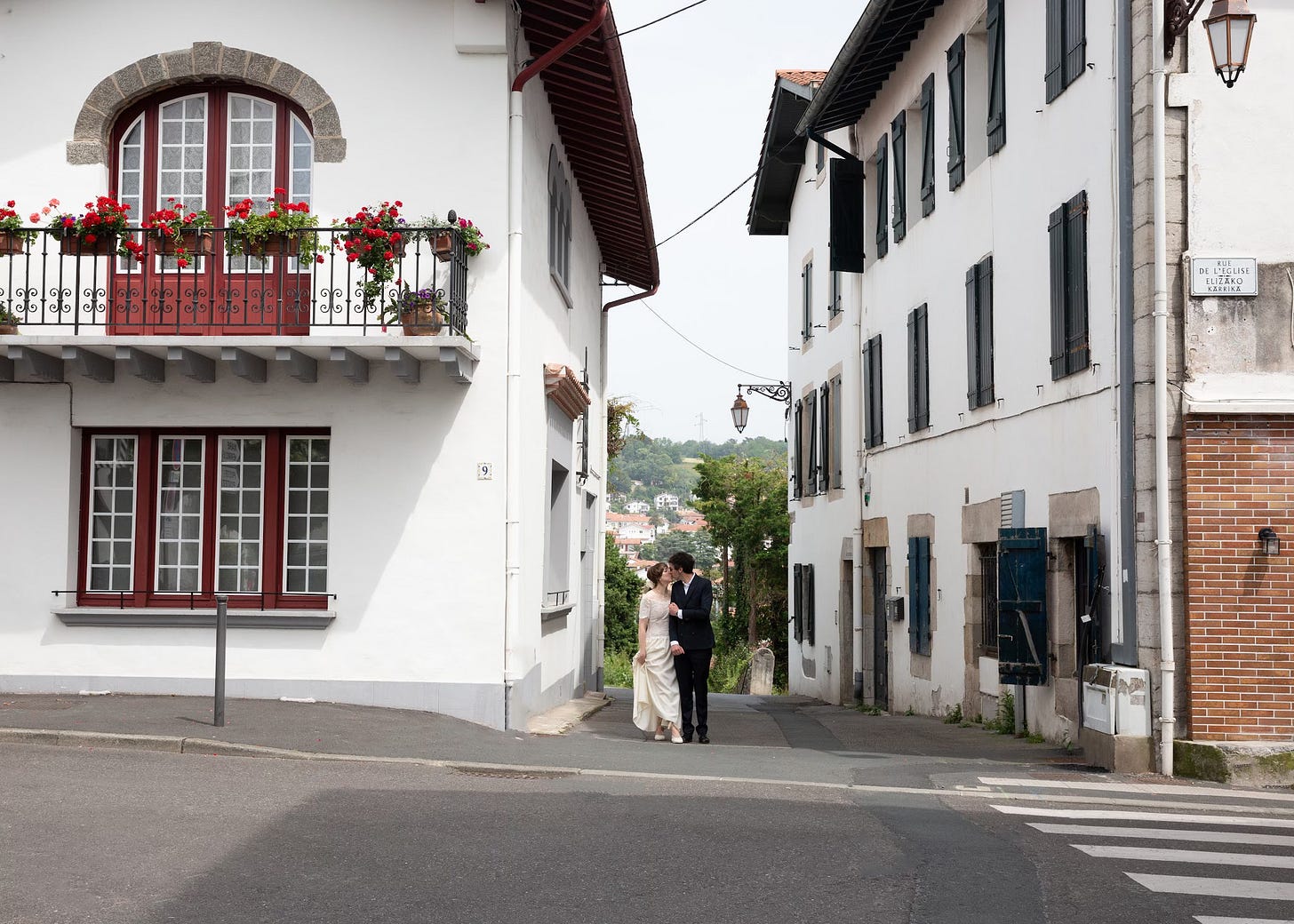
"Clavé: Brilliant Painter and Stage Designer"
While digging through the Condé Nast digital archives recently, I found an article from the April 15, 1954 issue of Vogue about Spanish painter Antoni Clavé.
The article tells of Clavé and his sweet connection to his mother, also an artist. Apparently she was nicknamed the Catalan Grandma Moses.
More on the pair:
Antoni Clavé, the Spanish painter who made so startling a success in Paris with his stage designs, has gone back to Barcelona for the exhibition, not of his own work, but of the lively primitive gouaches of his partially paralyzed mother, Maria Sanmarti.
A ruddy, round-cheeked man who looks as though he had posed for Goya, Clavé has recently had his own exhibition in Paris where he showed his darkly rich canvases with unexpected, perverse acid colors. Almost all of the paintings, a combination of sentiment and theatricality, have a poetic portrait of a woman's face, a portrait taken from a doll mannequin in his studio. The day before his show opened last December, collectors bought practically all the paintings; he is emerging now as one of the important representational painters.
Clavé's history is almost as contradictory as his acid colors. When he was thirteen in Barcelona, he left his first job as errand boy for a corset shop to work for a house painter. During the apprenticeship his boss advanced him from kitchens to ornamental ceilings, involving cloud puffs and cherubs. After he abandoned house painting, he took to copying Goya, to illustrating detective stories. All that remained behind him when he fought briefly during the Spanish Civil War. With the tags of the defeated Republican Army he fled to France. There the French immediately interned him at Perpignan. From his rough sketches of other internees and of the Senegalese who guarded them came the first Clavé exhibition, held in a pastry shop with the arrangements made by a French artist, Martin Vivès, who lived nearby. With Vivès to vouch for him, Clavé wangled freedom.
In Paris he soon became a hack illustrator of Wild West and cowboy stories. At that point, twenty-six-year-old Clavé set to discovering contemporary paintings, then known to him only through photographs of early Matisse and blue-period Picasso. He saw with surprise the brilliant palettes and the freshness of Bonnard. Vuillard and Grau-Sala and then Rouault, Soutine, and Picasso in his later periods hit him with a jolt. As Clavé progressed in Paris, he gave up cowboy illustrations, moved out of the hack assignments to important book illustrations. Among the books was Mérimée's Les Lettres d'Espagne, which delighted Christian Bérard so much that he suggested Clavé as a designer for Roland Petit's Compagnie des Champs Elysées. When the opening-night audience saw the Clavé-designed ballet, "Los Caprichos," they admired the rich sets, full of tricks learned in his house-painting days; theatre people liked the powerful suggestion of detail without the reality. Later, Clavé designed the famous "Carmen" ballet sets, an opera, more ballets, and then Samuel Goldwyn had him do the ballet sets in Hans Christian Andersen.
(Article continued) Clavé loved Hollywood. While Clavé had that sudden burst of young fame, his mother had an equally sudden flurry of fame. The Paris press called her a Catalan Grandma Moses. Within six years, including the present Barcelona one, she has had five exhibitions of her energetic canvases, bright with flowers, fruit, and animals. Completely paralyzed with the exception of her painting hand, Maria Sanmarti is housebound. In her apartment where everything is romantic, old, and nostalgic, with ropes of greeneries tacked to the ceilings and to the walls, she meets with her son at dinner every night. For the months before his December exhibition those dinners, with riz à l'Espagnol, were almost the only engagements he kept. In his Montparnasse studio, sealed off from gossip ("Was he a painter really?"), he gave himself over to painting, refusing to design, even for La Scala in Milan… < READ MORE >
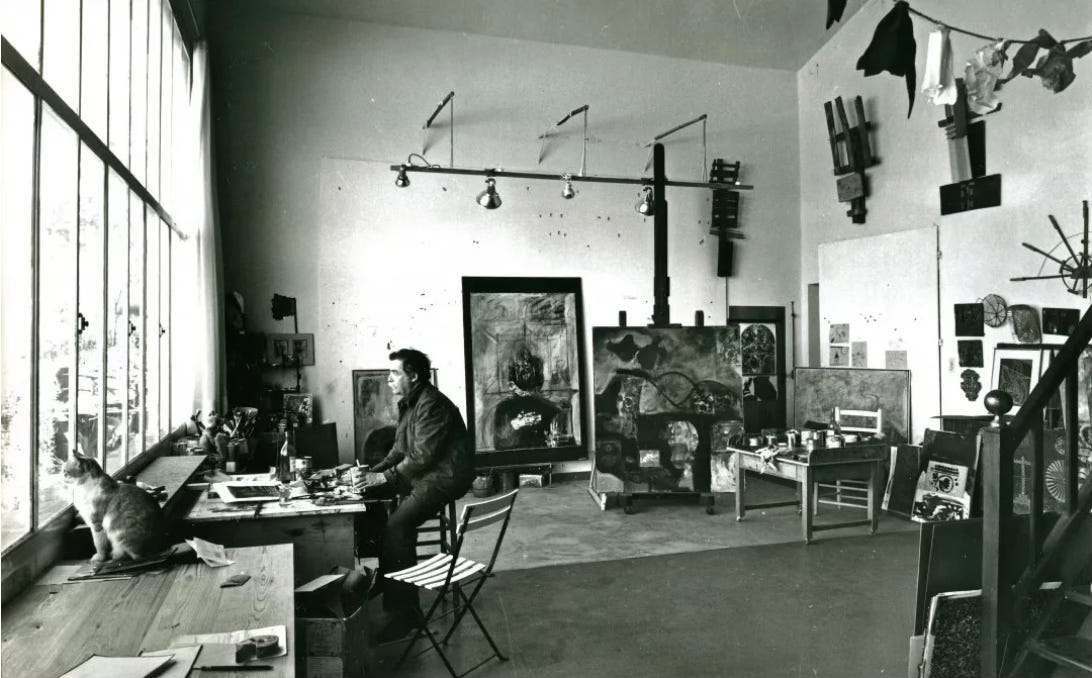


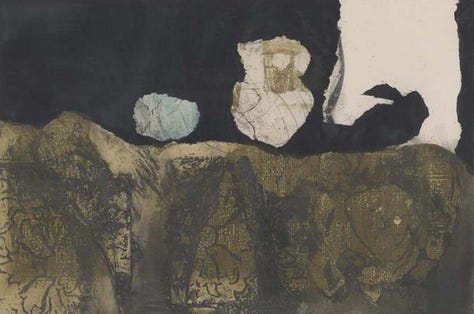
The Girard Sansusi heart
I like to imagine Alexander “Sandro” Girard’s mind having an explosion of turning parts and collaged pieces—like mine, but exponentially better than mine. The same undeniably goes for his wife Susan Needham Girard and her creative output. They are two people I would want in the backseat of my car during a roadtrip. We’d be snacking on bite-sized desserts and admiring the colors of the landscapes together.
Actually, I would want to do everything with them.


One of the most precious things they ever did as a couple (and believe me, their oeuvres were charming) was sketch out a shared symbol, akin to a brand logo, to represent their romance. It’s a combination their initials. Alexander Girard went by “Sandro” and to him, she was “Susie.” Two S’s mirrored each other, touching at their midpoints, and formed two hearts. The “Sansusi” symbol was born early in their courtship, remained their way of signing letters, and became a motif to spot in Girard designs.
For the 1968 San Antonio World’s Fair, Girard created the exhibition The Magic of a People. (Sidenote: my Substack profile photo shows me standing in front of this exhibition poster!) In the brochure for the pavilion, Girard is quoted: “Infinite are man’s expressions of beauty and love. Open your eyes, your ears, and your heart to them and you will unite the peoples of the world.” I wonder, while writing this phrase, if he was thinking of his unification with Susan—of Sansusi. ❣️
You can read more about Girard’s creative output in this enchanting book by the Vitra Design Museum. Coming soon is a little synopsis of my spring trip to Vitra near Basel, in which I lusted over many Girard originals in their private archive.
Germaine Lecomte’s gown for an Egyptian queen-to-be
While scouring eBay for vintage postcards for our wedding, I got a little sidetracked by this one from 1951. I think you’ll find the text on the reverse side fascinating, too!
FIT FOR A QUEEN
Paris: French designer Germaine Lecomte adjusts a ten million Franc diamond shoulder strap on the grey chiffon ball gown that will be part of Narriman Sake’s Trousseau when she marries King Farouk of Egypt on May 6th. Mme Lecomte, who has created thirty fabulous costumes for the Royal Trousseau, flew to Cairo with a staff of six midinettes to finish the diamond-lavished wedding gown under top-secret conditions. Mannequin Colette wears the gown and a 65-diamond bracelet created especially for the queen-to-be.
Acme photo by Rene Henry, staff photographer 4/30/1951
Related Notes:
REST IN PEACE to Françoise Hardy, who I truly cursed this month because I referenced her style as being the one I easily copy the most and then wore gold ballerina heels that reminded me of her on my wedding day. Then a couple days later—poof—we lost her! When I was just starting to learn French 4 years ago, I would drive around blasting her music, trying to practice my vowel sounds. OUI MAIS MOI, JE VAIS SEULE, PAR LES RUES, L’ÂME EN PEINE. Our souls are in permanent pain knowing she is gone.
Mansur Gavriel’s Spring/Summer 2016 collection featured handbags made from Girard textiles still produced by Maharam Studio. I have to get my hands on this red Toostripe (1965) circular bag somehow. I vaguely remember this collaboration, but have no idea why it slipped from my mind!!!! I’m a Girard Gal forever.

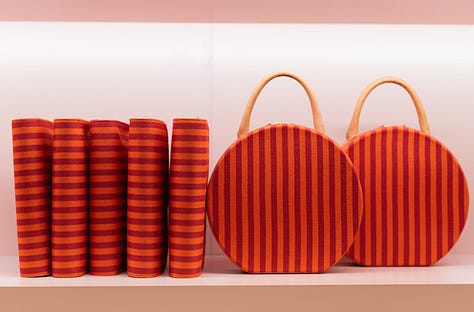

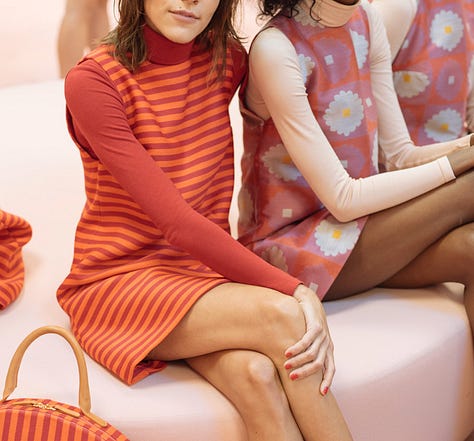


Mansur Gavriel's SS 2016 Accessories Line Girard’s complete overhaul of Braniff International Airlines in the mid-to-late-1960s is what my day dreams are made of. I think he designed just under 20,000 elements for this company rebranding, including furniture series informally called the Girard Group that I hope to feature in my home someday. And don’t get me started on the Pucci collaboration for the stewardess outfits. “The End of the Plain Plane” is also the world’s best tagline.


Above: A must-watch video of Braniff's rebrand; Two middle: Braniff Airlines stewardesses dressed in custom Pucci; Below: Girard Group chair and ottoman in one of its many combinations of patterns and colors I think Mansur Gavriel paid tribute to this design legacy so nicely—like Girard, they can do no wrong in my eyes!
Speaking of groovy, did you catch my last writing about the AG Mini*s room, and my 1stdibs imaginary shopping extravaganza? Come relive the year 2000 with me.
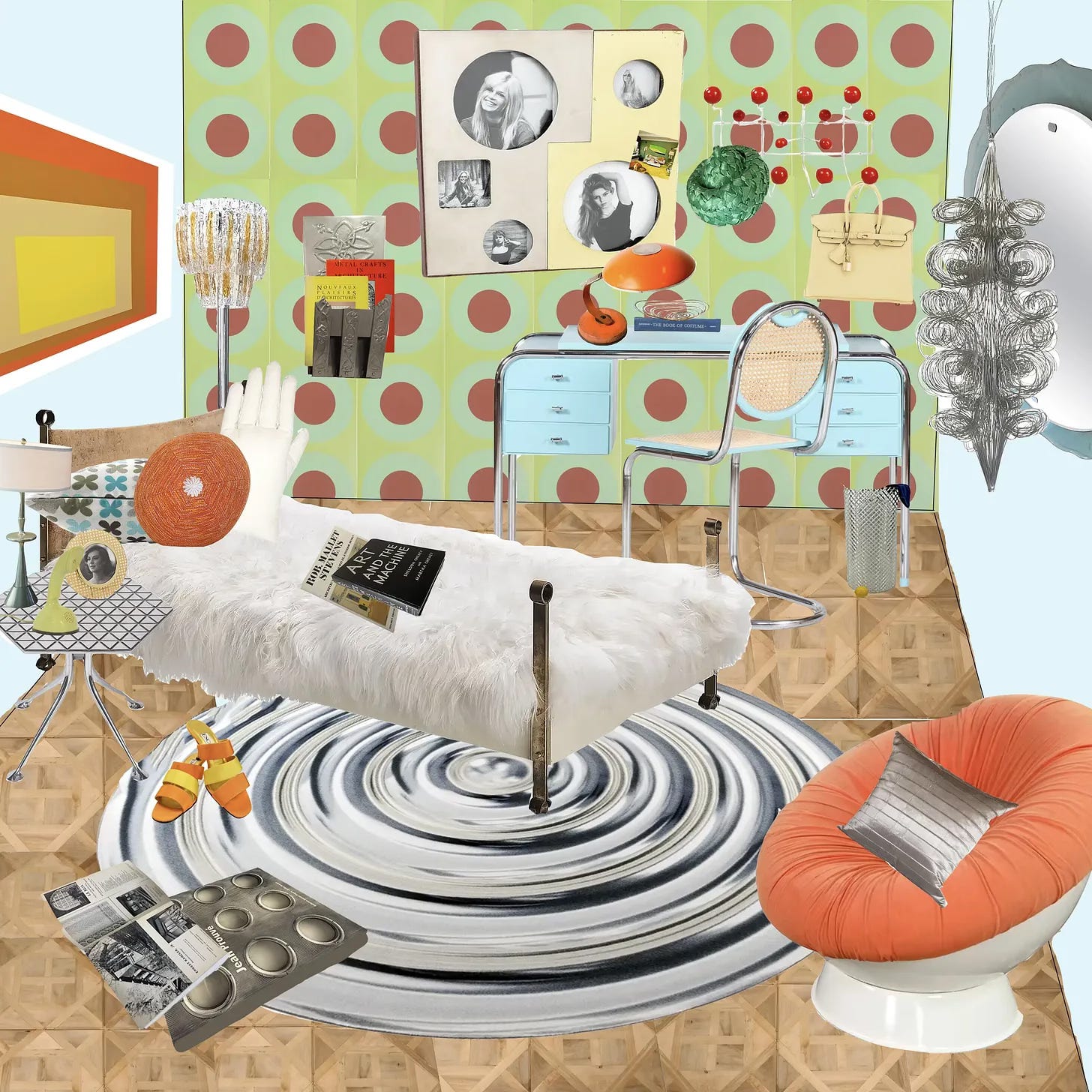
The Absolument Archives, Hodgepodge Edition:
You can take a look at my first hodgepodge, where I wrote about clothing brand Bode’s lack of literature as props, the oil paintings of Sahara Longe, and Isamu Noguchi’s Miss Expanding Universe sculpture:
xx
Shooting you bounties of love from this celestial week!!!
Kelsey Rose (BARTHÉS!!!)


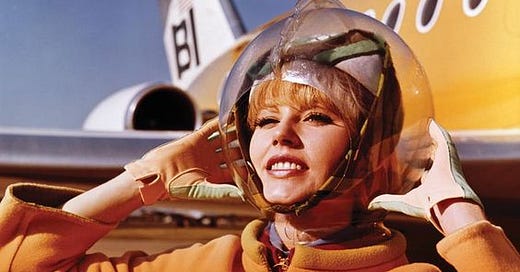


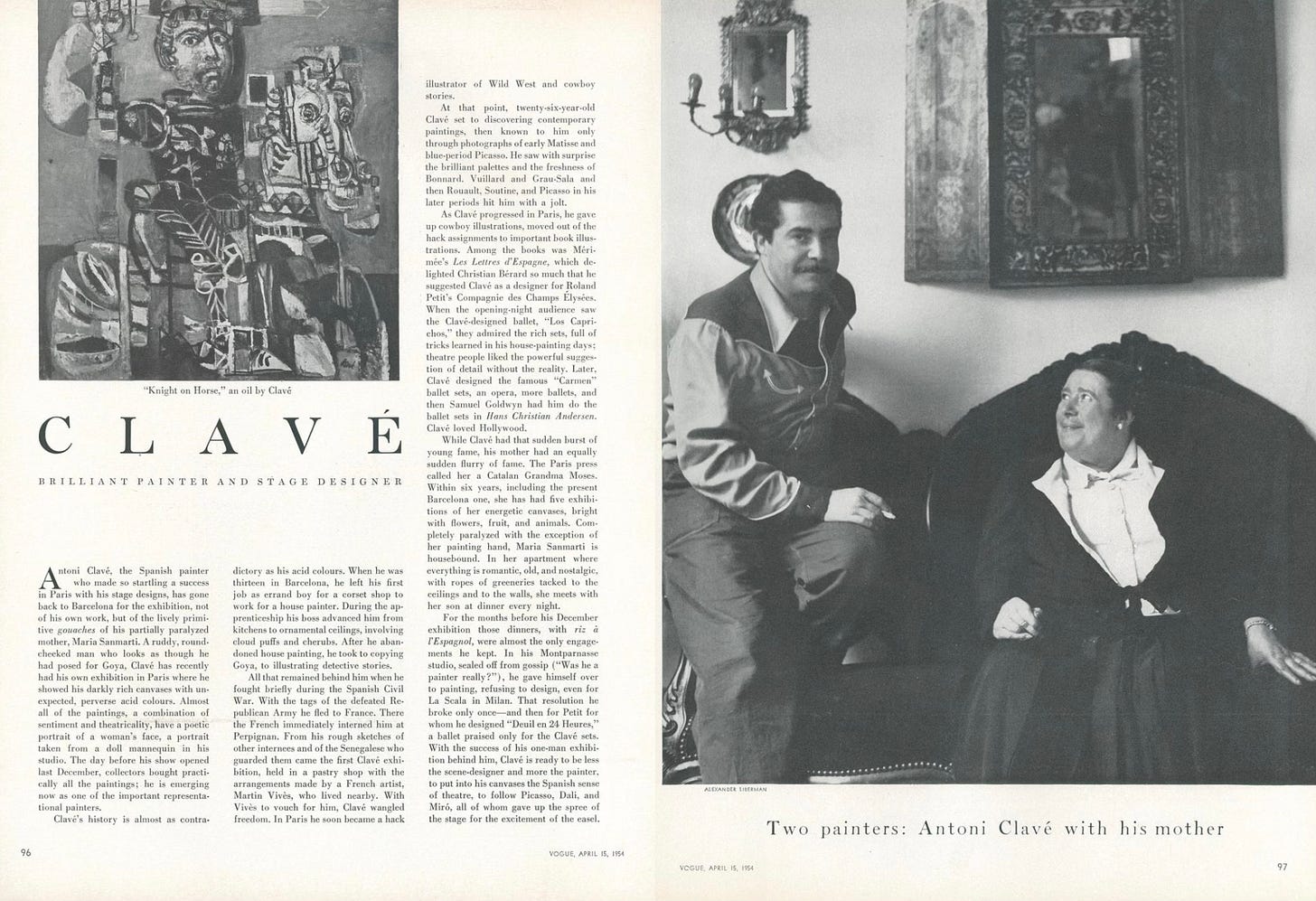
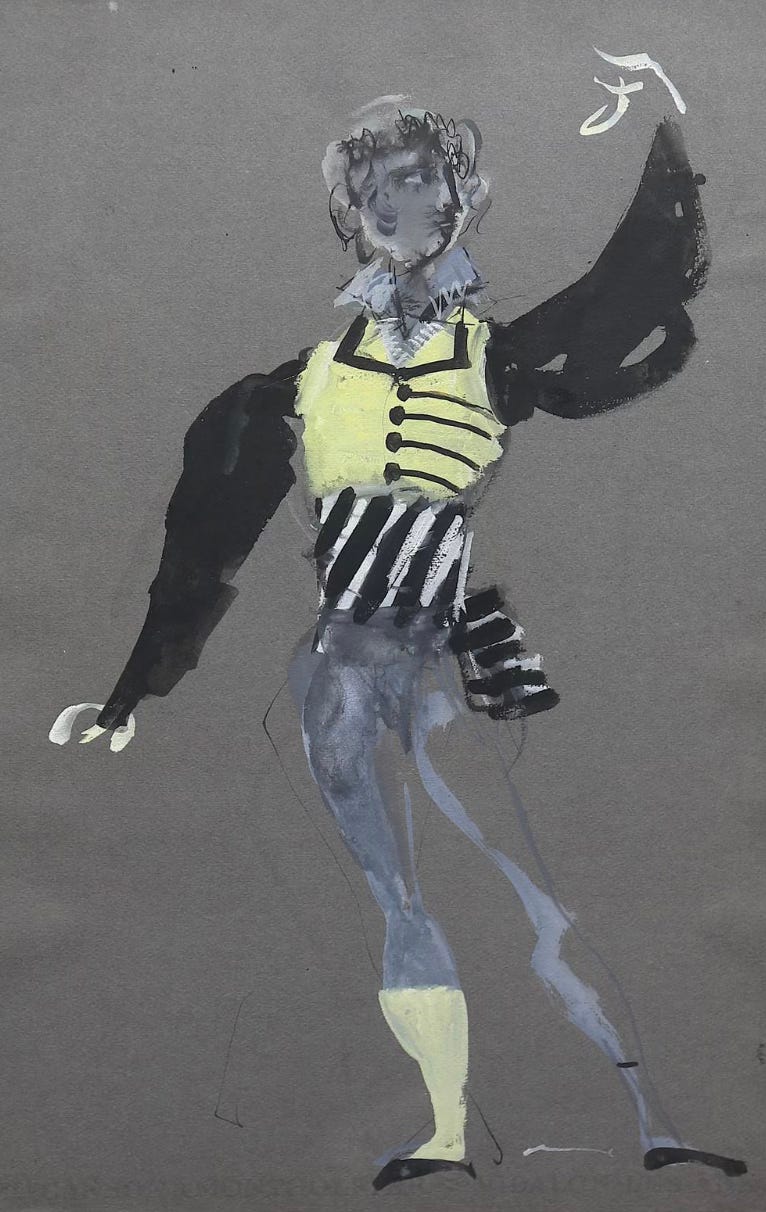
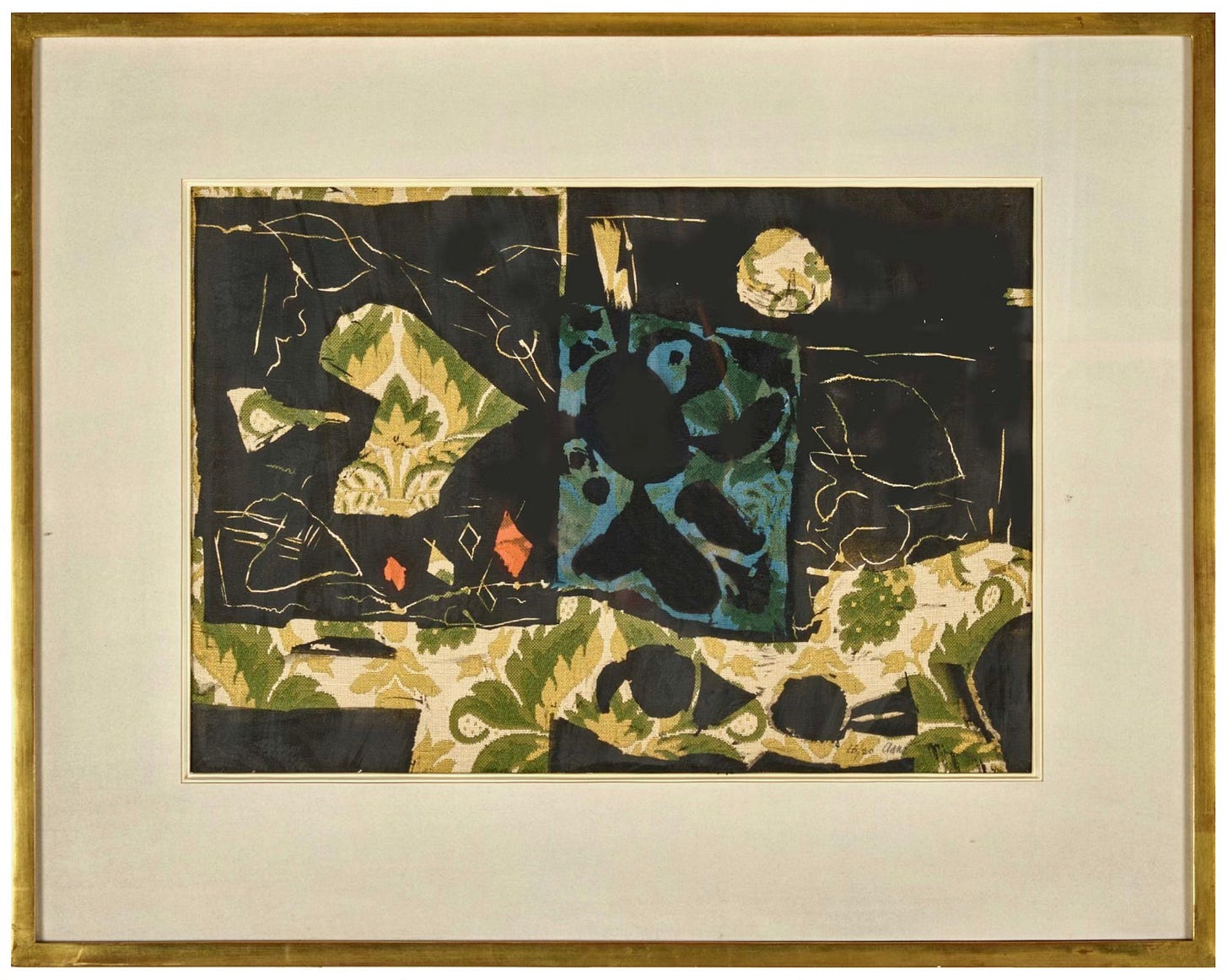
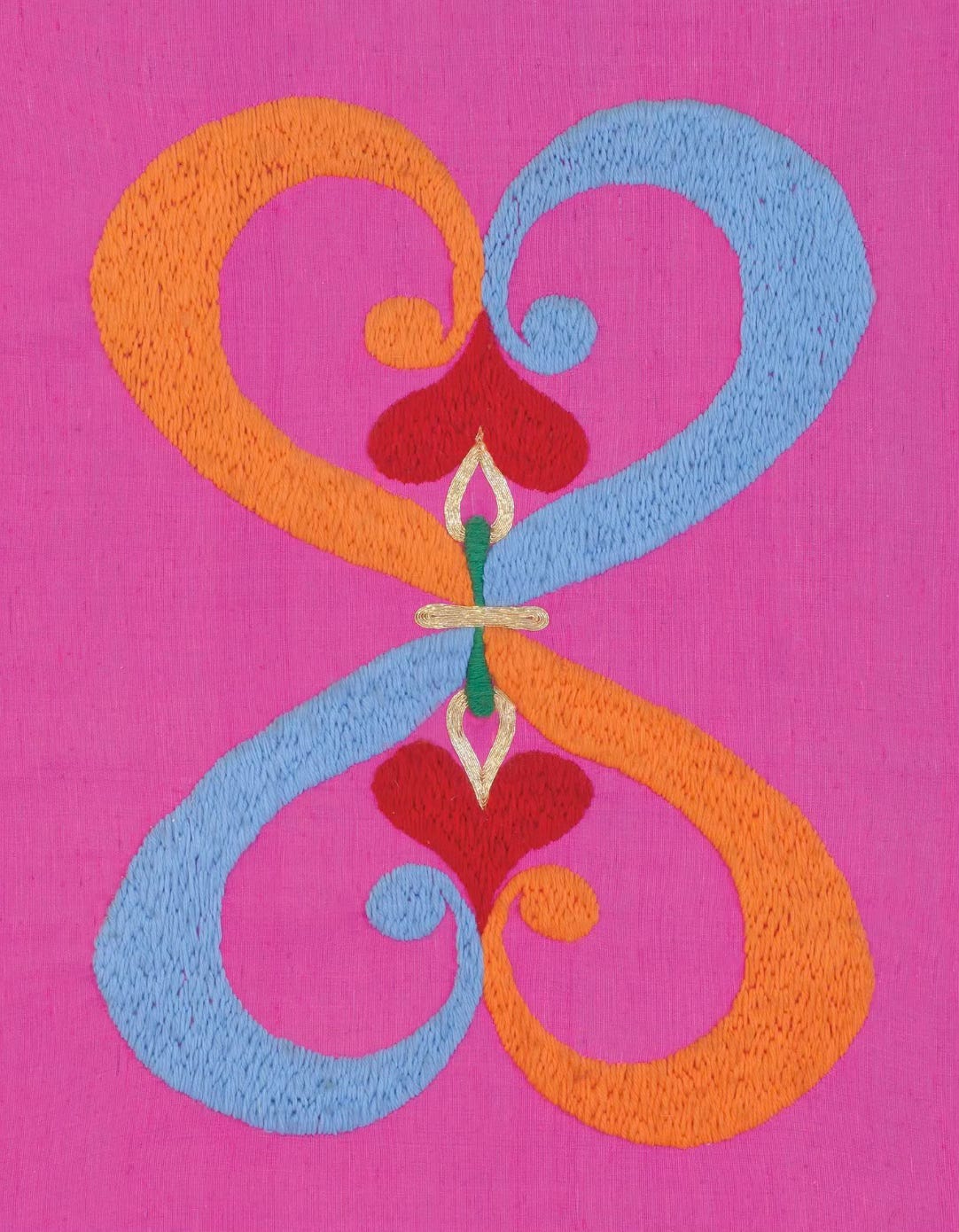
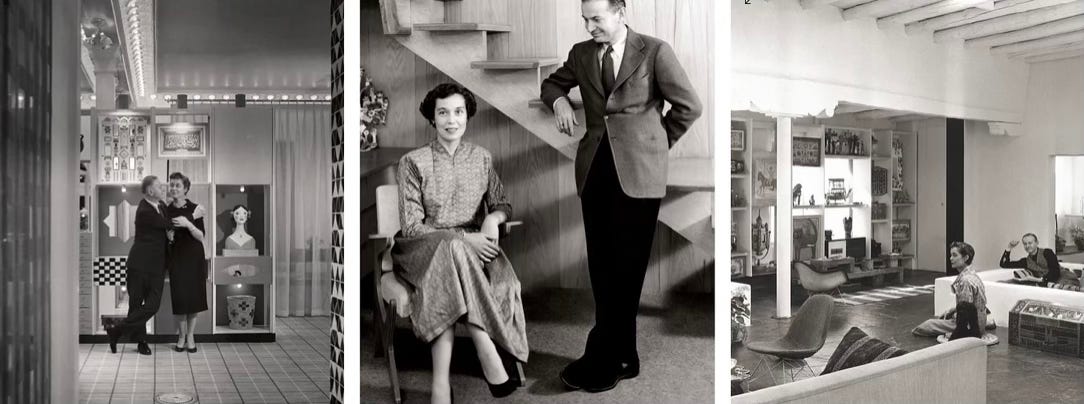
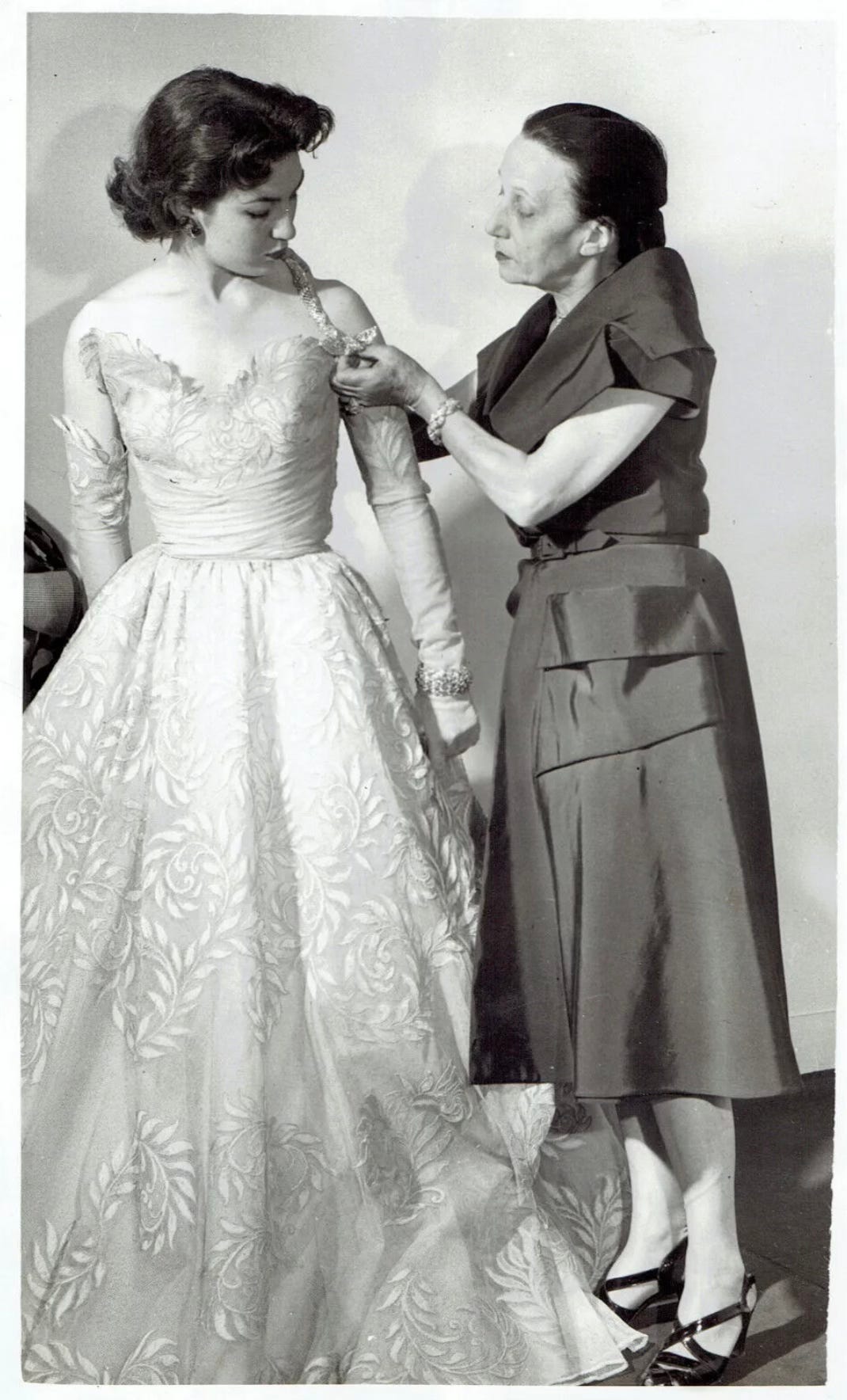
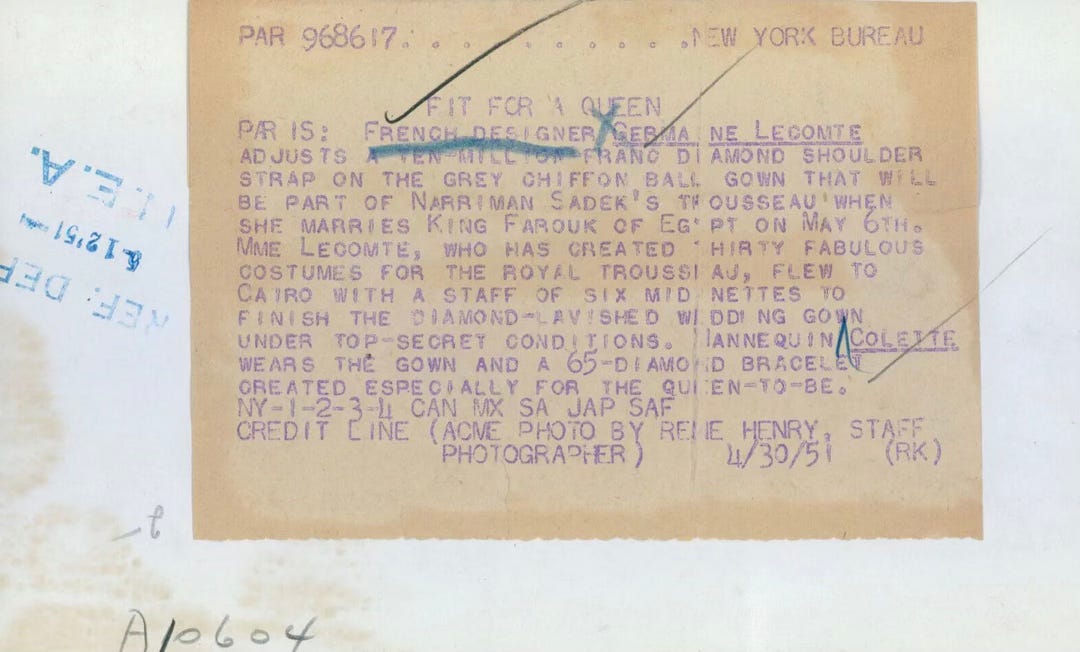
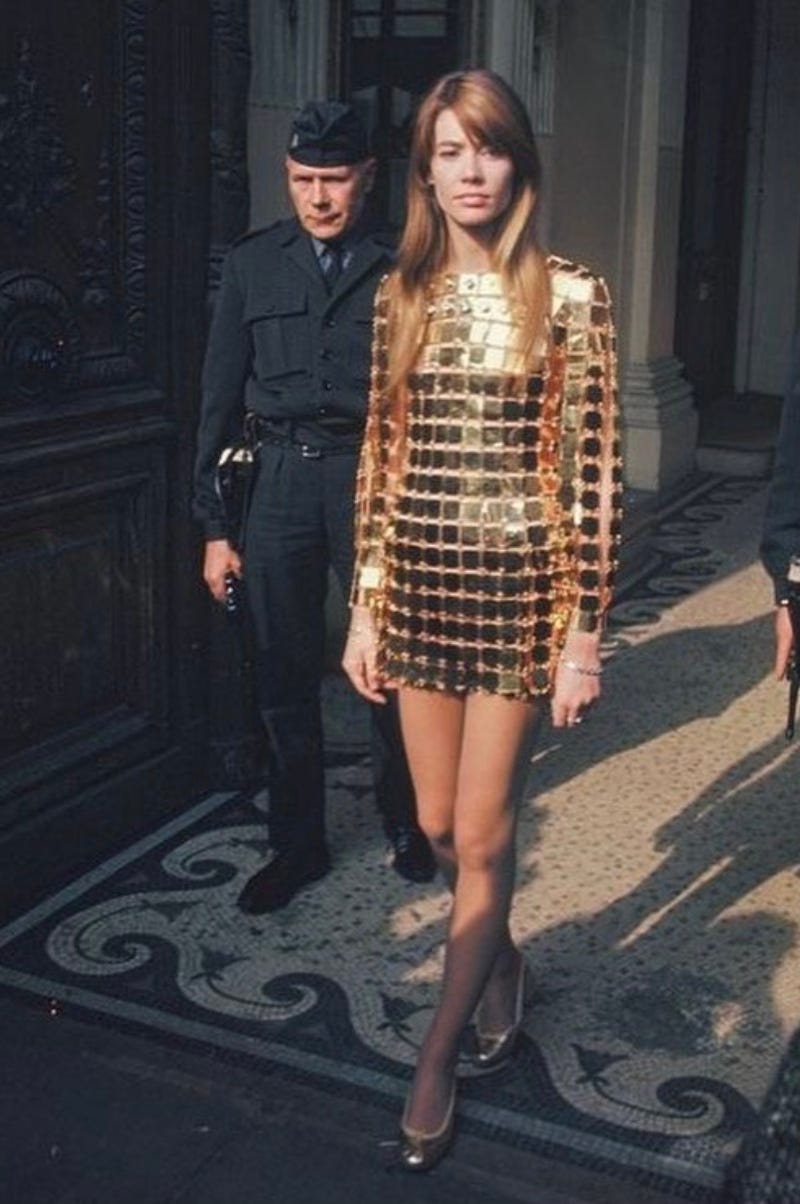
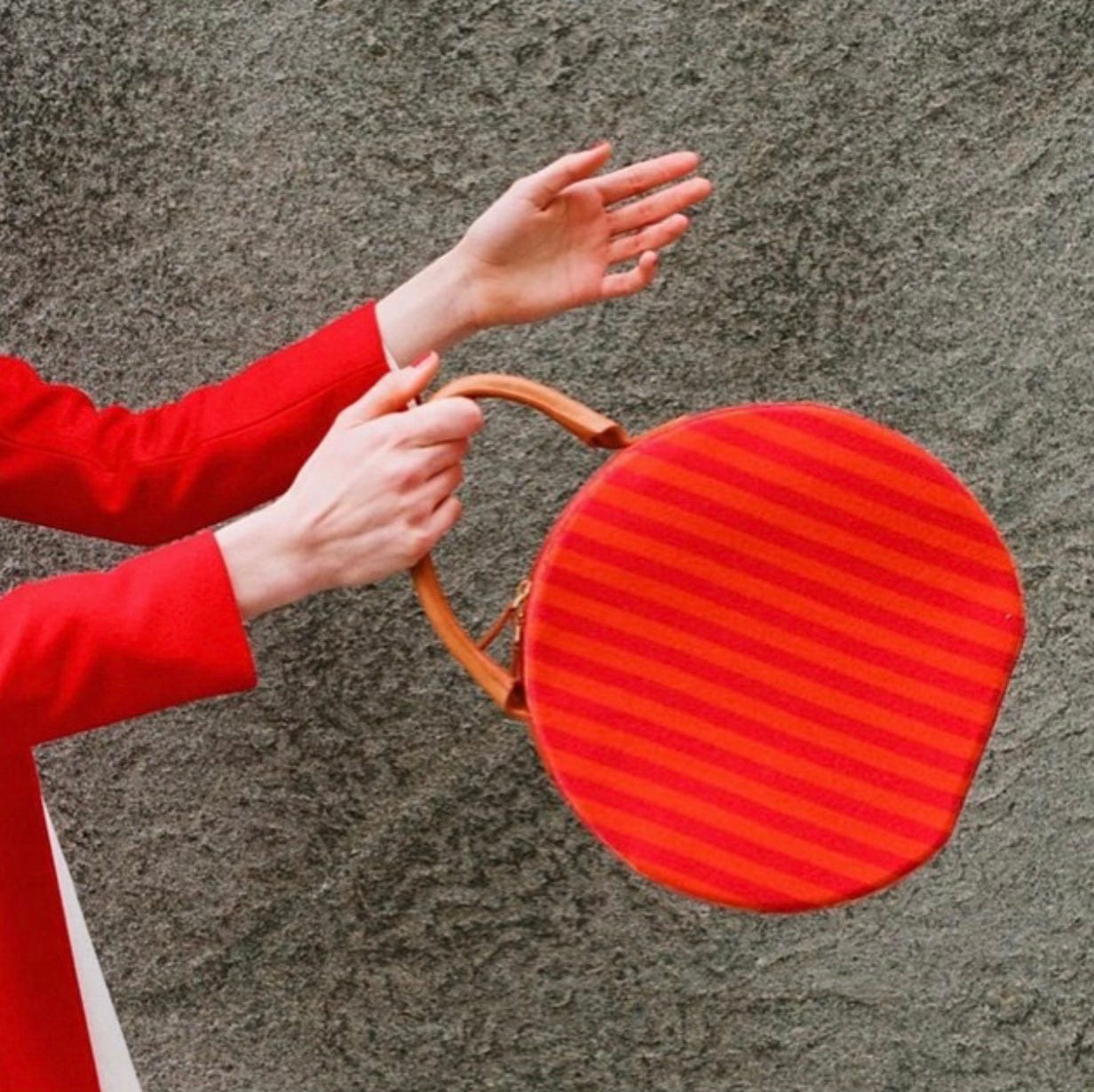

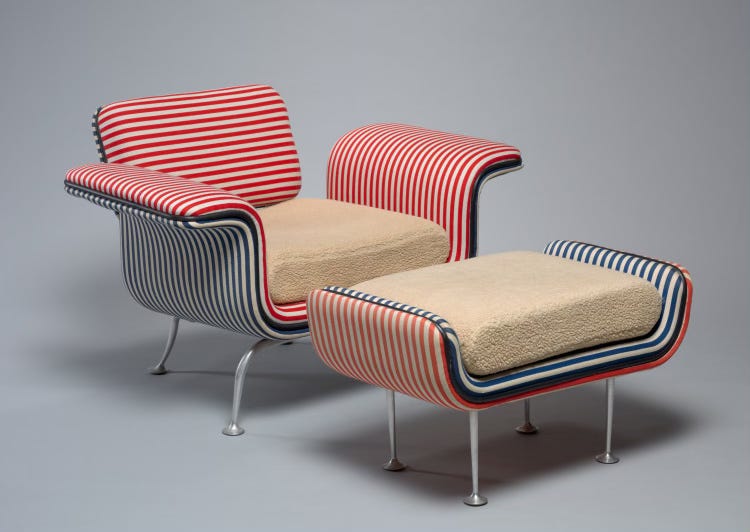

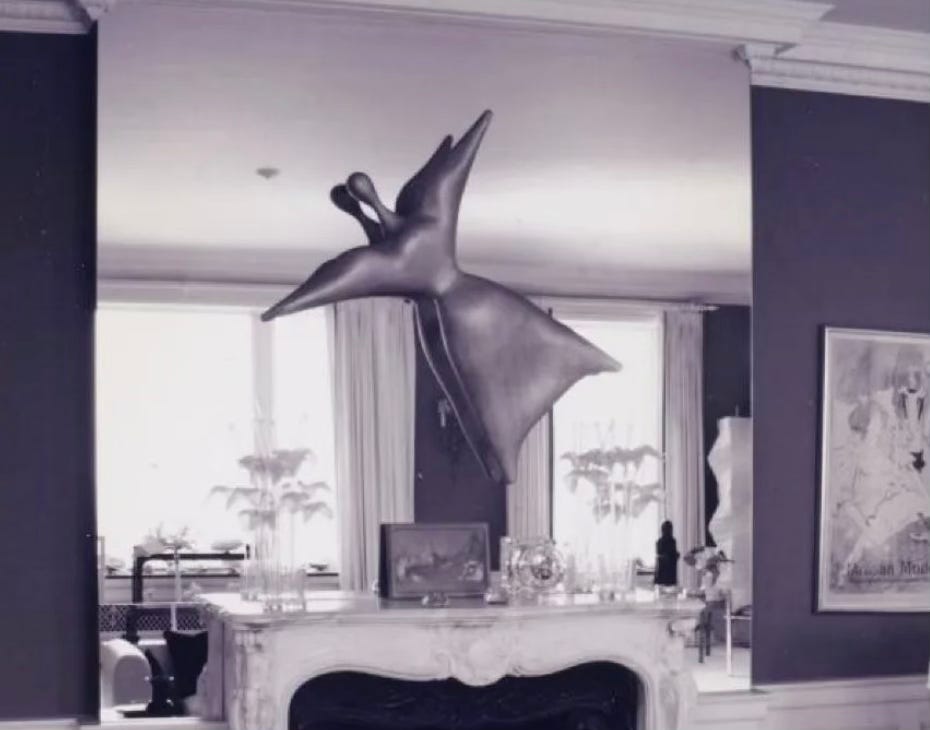

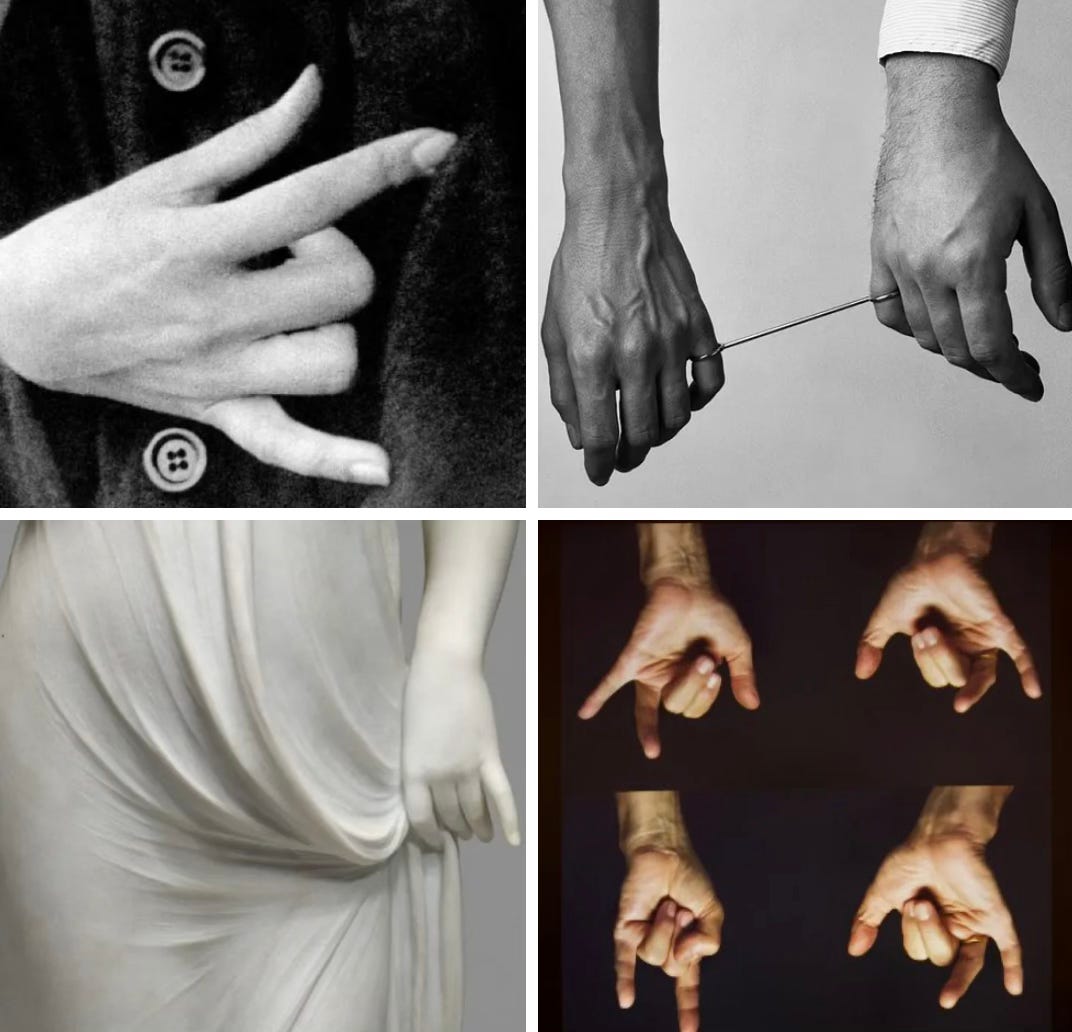
Am currently down in Hossegor and heading to San Sebastian for the day today - your wedding photos have made me want to run, vintage dress billowing, to the nearest Basque church to say 'I do'!! x
I stand in awe of your "turning parts and collaged pieces"...! So good.